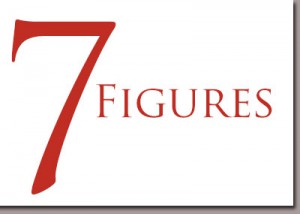 The Christian share of the U.S. population is declining, while the number of U.S. adults who do not identify with any organized religion is growing, according to an a new survey by the Pew Research Center that compares the religious landscape of 2015 to 2007. Here are seven figures you should know from the report.
The Christian share of the U.S. population is declining, while the number of U.S. adults who do not identify with any organized religion is growing, according to an a new survey by the Pew Research Center that compares the religious landscape of 2015 to 2007. Here are seven figures you should know from the report.
1. Between 2007 and 2014, the share of the U.S. population that identifies as Christian fell from 78.4 percent to 70.6 percent, driven primarily by declines among mainline Protestant and Catholics.
2. The rise in intermarriage appears to be linked with the growth of the religiously unaffiliated population. Nearly one-in-five people surveyed who got married since 2010 are either religiously unaffiliated respondents who married a Christian spouse or Christians who married an unaffiliated spouse. By contrast, just 5 percent of people who got married before 1960 fit this profile.
3. Catholics appear to be declining both as a percentage of the population and in absolute numbers. The new survey indicates there are about 51 million Catholic adults in the U.S. today, roughly 3 million fewer than in 2007. But taking margins of error into account, the decline in the number of Catholic adults could be as modest as 1 million.
4. The new survey indicates that evangelical–including the Southern Baptist Convention, the Assemblies of God, Churches of Christ, the Lutheran Church-Missouri Synod, the Presbyterian Church in America, and many nondenominational congregations—now have a total of about 62 million adult adherents. That is an increase of roughly 2 million since 2007, though once the margins of error are taken into account, it is possible that the number of evangelicals may have risen by as many as 5 million or remained essentially unchanged. And evangelical Protestants, while declining slightly as a percentage of the U.S. public, probably have grown in absolute numbers as the overall U.S. population has continued to expand.
5. Of the major subgroups within American Christianity, mainline Protestantism—a tradition that includes the United Methodist Church, the American Baptist Churches USA, the Evangelical Lutheran Church in America, the Presbyterian Church (U.S.A.) and the Episcopal Church, among others—appears to have experienced the greatest drop in absolute numbers. In 2007, there were an estimated 41 million mainline Protestant adults in the United States. As of 2014, there are roughly 36 million, a decline of 5 million – although, taking into account the surveys’ combined margins of error, the number of mainline Protestants may have fallen by as few as 3 million or as many as 7.3 million between 2007 and 2014.
6. The size of the historically black Protestant tradition—which includes the National Baptist Convention, the Church of God in Christ, the African Methodist Episcopal Church, the Progressive Baptist Convention and others—has remained relatively stable in recent years, at nearly 16 million adults.
7. Christianity – and especially Catholicism – has been losing more adherents through religious switching than it has been gaining. More than 85 percent of American adults were raised Christian, but nearly a quarter of those who were raised Christian no longer identify with Christianity. Former Christians represent 19.2 percent of U.S. adults overall.

